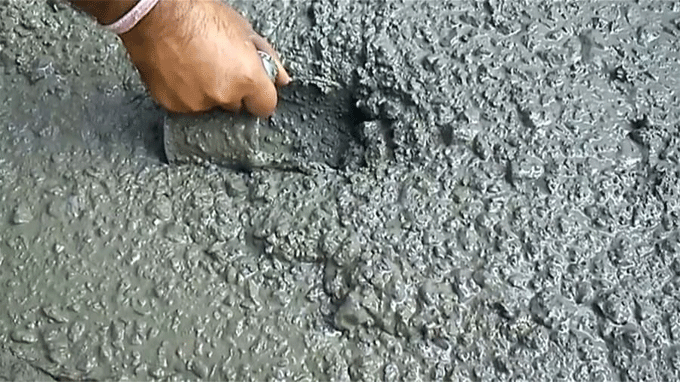
Why water cement ratio is vital in concrete mix?

In concrete there are different types of materials like cement, sand, Coarse aggregate and water which are combined in exact ratios. This ratio is provided at either as a nominal mix or by design mix.
All the materials contain definite properties and the strength of concrete is mostly dependent on these properties.
Cement is employed as a binding material in concrete because of the best adhesive and cohesive property whereas water is the cheapest and most vital of concrete. Once these two materials are blended, a chemical reaction alias hydration is produced with a sticky and thick gel that contains a binding property to tie all aggregate in form of hard and strong material. So, cement and water both can be used for binding all the materials of concrete jointly.
When cement and water are applied according to their ratio, it is known as water-cement ratio. Water-Cement Ratio means the ratio of the weight of water to the weight of cement.
Water/cement ratio with adherence to IS 10262 (2009) for the concrete mix differs from 0.4 to 0.6. 0.7 w/c ratio is also applicable for pumped concrete. 0.5 w/c ratio signifies that for each 100 kg of cement, 50 lit. of water is added. When w/c ratio is raised, the amount of water is reduced.
In technical terms, the cement should contain 23% of water for the hydration process and 15% for development of pores and volume increment. So, minimum 38% of the water by weight of cement should be maintained.
There should be adequate amount of water in the concrete mix to maintain full hydration of cement paste and eliminate capillary pores there. The minimum quantity of this water should be similar to 0.38 w/c ratio. Accordingly, if water-cement ratio is under 0.38, complete hydration can?t be performed. If the ratio is surpassed, this concrete mass turns out to be porous and penetrable and if it is less, concrete turns out to be dry and harsh and may not bond and attain full strength.
For work-ability purpose, this water-cement ratio should remain as 0.4, but its selection is based on the requirement of work-ability in various exposure conditions and nature of work. At a water-cement ratio of 0.4, the mix contains adequate water for hydration and simplifies the concreting process for mixing, placing, transporting and compacting since water functions as a lubricant in the concrete mix and decreases the internal friction among particles of concrete.
At this water-cement ratio, the ?gel? that is produced remains in good physical structure and solid state. At greater water/cement ratio the ?gel? that is produced remains in the poor physical structure. It produces voids throughout subsequent evaporation and develops into more porous. As a result, the strength gets lower in due course of time.
Computation of water quantity for concrete
While measuring the quantity of water for concrete mix, initially determine the cement content for the volume and w/c ratio. Suppose, there is 80 kg of cement for concrete mix and w/c ratio is 0.45.
Required amount of water = Cement volume X w/c ratio
So, essential water quantity is 80 kg X 0.45= 36 lit.
To get further information, go through the following link gharpedia.com


